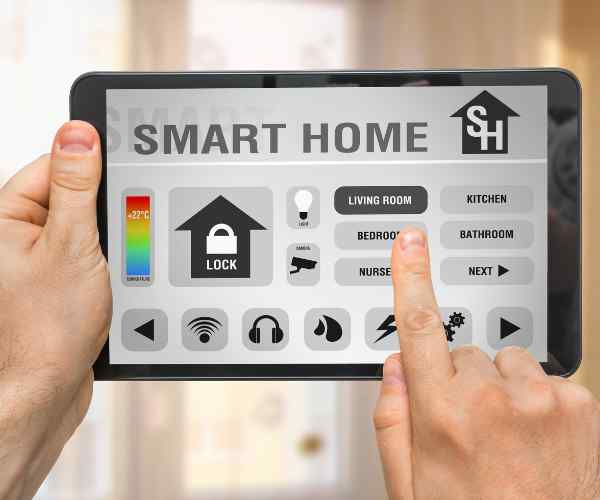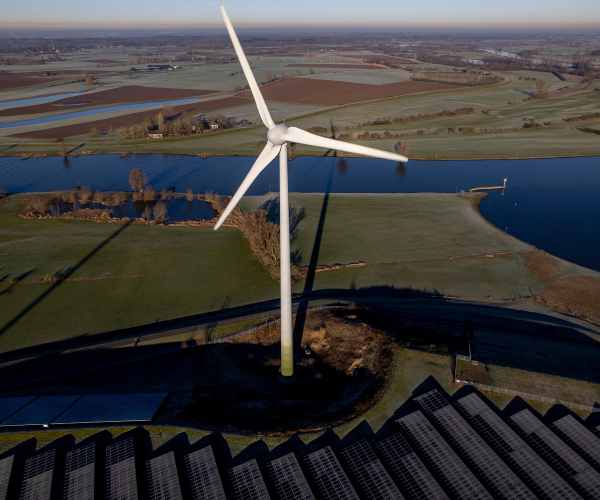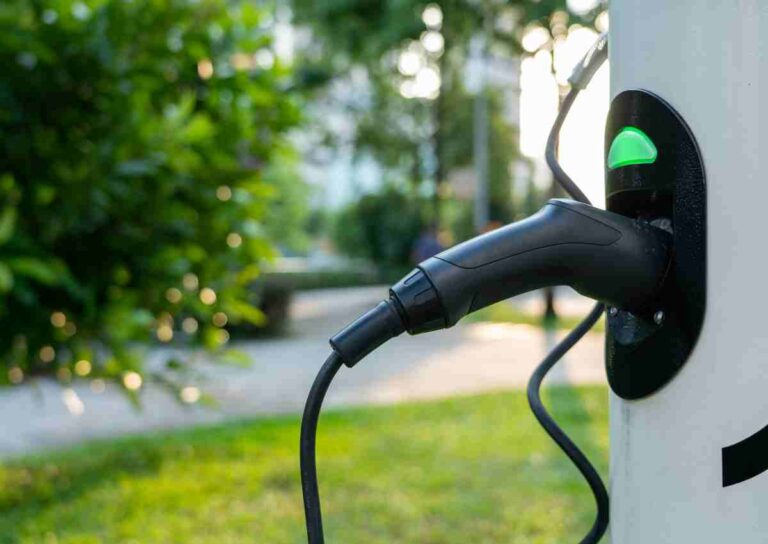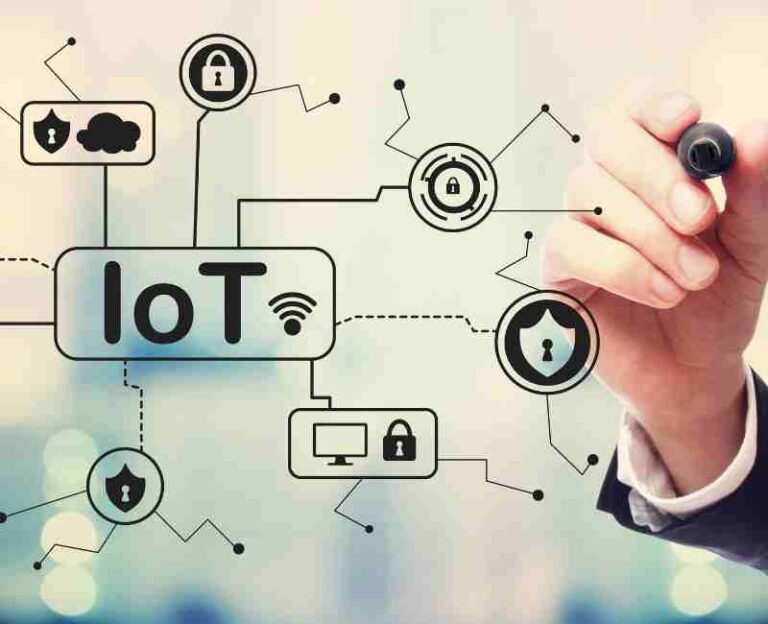The importance of energy-efficient cooling solutions cannot be overstated, especially when considering their crucial role in mitigating the environmental impact of modern data centers. Data centers are known for their energy-intensive operations, and as the demand for digital services continues to rise, so does the need for energy efficiency. In this introductory section, we will delve into the significance of adopting energy-efficient cooling solutions and highlight key terms essential to understanding the broader context:
- Data Centers: These facilities are the backbone of the digital age, serving as hubs for information storage, processing, and dissemination.
- Energy Consumption: Data centers are notorious for their substantial energy consumption, making them a focal point for efficiency improvements.
- Environmental Impact: The ecological footprint of data centers, including their carbon emissions and resource utilization, is a critical aspect of their overall impact.
- Energy Efficiency: The measure of how effectively data centers utilize energy to perform their functions, emphasizing the need for optimization.
- Data Center Cooling: The specific focus is on cooling solutions within data centers, as efficient cooling plays a pivotal role in overall energy efficiency.
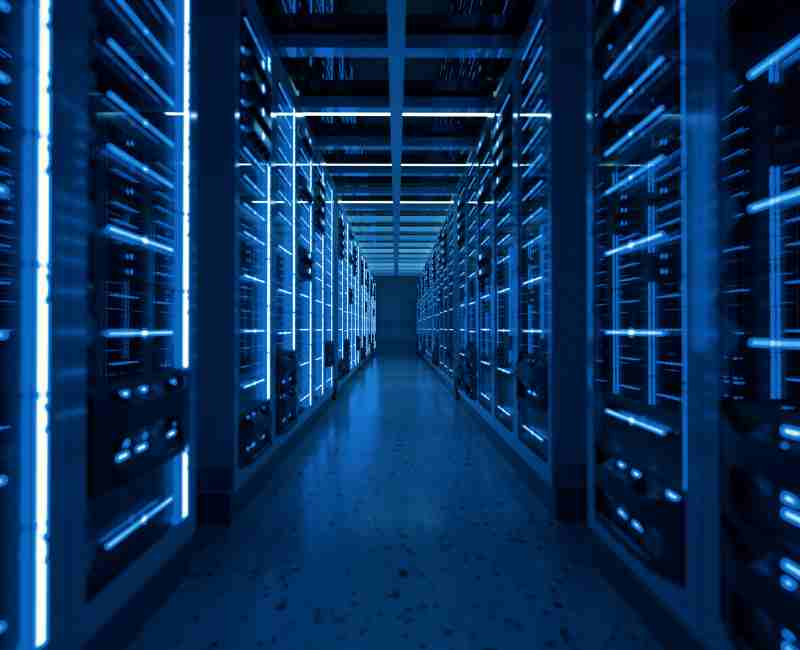
Understanding Data Center Cooling Challenges
Efficient cooling is at the forefront of addressing the challenges faced by data centers. Let’s delve into the specifics of these challenges:
Energy Consumption and Heat Dissipation Challenges:
-
- The substantial energy consumption in data centers is primarily attributed to the constant need for cooling systems to manage the heat generated by servers and other equipment.
- Heat dissipation becomes a significant challenge as data centers house numerous high-performance servers, which collectively generate a considerable amount of heat.
Energy Wastage in Traditional Cooling Methods:
-
- Traditional cooling methods, such as air conditioning, often lead to significant energy waste.
- Inefficient cooling systems contribute to higher operational costs and an increased environmental impact due to excessive energy consumption.
To further understand the intricacies of these challenges, it’s essential to explore key terms associated with data center cooling:
| Key Term | Description |
|---|---|
| Airflow Management | Systematic control and direction of air within the data center to optimize cooling efficiency. |
| Heat | The thermal energy generated by servers and equipment must be effectively managed to prevent overheating. |
| Systems | The overall infrastructure, including servers and cooling systems, contributes to the data center’s operation. |
| Waste | In the context of cooling, it refers to any inefficiencies leading to unnecessary energy consumption. |
| Temperature | The control and maintenance of optimal temperatures within the data center to ensure equipment reliability. |
| Energy Waste | Any inefficiency or unnecessary consumption of energy resources within the data center’s cooling systems. |
| Data Storage | The physical or virtual space where data is stored and the associated heat generated must be managed. |
| Climate Diversity | Consideration of geographical climate variations and their impact on data center cooling requirements. |
| Humidity Levels | The control of moisture levels in the data center environment affects both cooling efficiency and equipment reliability. |
Understanding these terms provides a foundation for addressing and overcoming the challenges associated with energy consumption and heat dissipation in data centers.
Energy-Efficient Cooling Technologies
Liquid cooling has emerged as a highly effective solution in the realm of data center cooling. Let’s explore its role and benefits:
Role in Optimal Cooling Efficiency:
-
- Liquid cooling systems use coolants, which are more efficient at absorbing heat compared to air. This allows for closer proximity to heat sources (like servers), thereby enhancing cooling efficiency.
- Efficiency is further heightened as liquid cooling requires less energy than traditional air cooling methods.
Reducing energy consumption:
-
- By directly cooling server components, liquid cooling significantly reduces the overall energy consumption of the data center.
- This reduction is crucial to minimizing the data center’s environmental footprint.
Benefits for Servers and Data Center Operations:
-
- Reliability: Servers are maintained at optimal temperatures, reducing the risk of overheating and enhancing performance reliability.
- Reduced Energy Consumption: The efficient heat transfer capabilities of liquid cooling mean lower energy requirements for cooling operations.
Air Containment Strategies
Aisle/Cold Aisle containment is another innovative approach to data center cooling. Here’s how it impacts the cooling process:
Managing Cold Air Streams:
-
- By segregating hot and cold air streams, aisle containment ensures that cold air is effectively used for cooling equipment before it gets warmed up by the servers.
- This segregation enhances the efficiency of the cooling systems, as the cooler air is directed precisely where it is needed.
Impact of Physical Barriers:
-
- Physical barriers in cold aisle containment help maintain the integrity of cold air streams, preventing the mixing of hot and cold air.
- This containment significantly improves overall cooling efficiency and reduces the energy required to maintain optimal temperatures.
Cold Aisle Containment: A technique involving the use of physical barriers to contain cold air streams in data center aisles.
Hot Air/Cold Air: The air streams within a data center, where hot air is the byproduct of server operation and cold air is used for cooling.
Physical Barriers: Structures used to separate different air streams, enhancing cooling efficiency.
Airflow: The movement and management of air within the data center are crucial for effective cooling.
Innovative Cooling Techniques
The evolution of data center cooling has led to the adoption of innovative techniques that significantly enhance efficiency and sustainability. Among these, free cooling and waterside economies have become prominent. Additionally, advanced climate control systems like precision air and adaptive cooling systems play a crucial role in maintaining optimal data center environments.
Free Cooling
Definition and Mechanism:
-
- Free cooling is a method that utilizes external environmental conditions to assist in cooling data centers.
- It typically involves using outside air when it’s cooler than the air inside the data center, reducing reliance on traditional air conditioning.
Implementation and Benefits:
-
- Airside Free Cooling: utilizes ambient air directly, which is particularly effective in cooler climates.
- Reduces Energy Consumption: There is a significant reduction in power usage as it relies less on mechanical cooling methods.
Waterside Economization
Function and Usage:
-
- It involves using naturally cool water sources, like lakes or rivers, to aid in the cooling process.
- This method is often used in conjunction with traditional cooling systems to maximize efficiency.
Advantages:
-
- Energy Efficiency: This can significantly lower energy consumption during cooler periods.
- Sustainability reduces the environmental impact due to lower energy use.
Advanced Climate Control
Precision Air Systems:
-
- These systems deliver conditioned air more accurately to the required areas in a data center.
- Key Feature: Tailored to maintain specific temperatures and humidity levels for optimal equipment performance.
Adaptive Cooling Systems:
-
- These systems adjust cooling based on real-time data center conditions.
- Benefits: increased efficiency as they adapt to changing heat loads and environmental conditions.
Free cooling is a method that leverages cooler external air or water to reduce the need for mechanical cooling.
Innovative Solutions: New and advanced technologies are employed to enhance cooling efficiency.
Technologies refers to the tools, systems, and methods used in innovative cooling techniques.
Precision Air: A system that delivers conditioned air with high precision in terms of temperature and humidity control.
Climate Diversity: Acknowledgment of varying climatic conditions and their influence on choosing the appropriate cooling strategy.
Cost and Carbon Footprint Reduction
Implementing energy-efficient cooling strategies in data centers not only leads to significant cost savings but also plays a vital role in reducing carbon emissions. These initiatives contribute substantially to the broader goals of environmental sustainability. Let’s analyze how energy-efficient cooling impacts both operational costs and carbon footprints.
Cost Savings
Reduction in Energy Bills:
-
- By adopting more efficient cooling methods, such as liquid cooling and free cooling, data centers can drastically lower their energy usage.
- This translates directly into reduced energy bills, which is a significant portion of the operational costs in data centers.
Long-term financial benefits:
-
- While the upfront cost for more efficient systems might be higher, the long-term savings in energy costs justify the investment.
- Technologies like adaptive cooling systems optimize energy use, leading to continuous cost savings over time.
Carbon Emissions Reduction
Lower energy consumption:
-
- Reduced energy consumption directly correlates with a decrease in carbon emissions associated with power generation.
- This is especially significant in regions where the energy mix includes a high proportion of fossil fuels.
Adoption of Renewable Energy Sources:
-
- Incorporating renewable energy sources into cooling systems can further reduce the carbon footprint of data centers.
- This approach aligns with global efforts to combat climate change and reduce greenhouse gas emissions.
Environmental Sustainability
Minimizing Ecological Impact:
-
- Energy-efficient cooling strategies help significantly lower the overall environmental impact of data centers.
- This includes not just reductions in carbon footprint but also in water usage and other environmental resources.
Promoting a Greener Image:
-
- Data centers focusing on reducing their environmental impact through sustainable cooling solutions also benefit from an enhanced corporate image.
- This green initiative can align the company with customer values and regulatory requirements for environmental sustainability.
Cost Savings: The reduction in operational expenses, particularly energy costs, through efficient cooling strategies.
Carbon Footprint: The total amount of greenhouse gases, including carbon dioxide, emitted directly or indirectly by the data center.
Carbon Emissions: The release of carbon into the atmosphere as a result of data center activities, especially through energy consumption.
Environmental Sustainability: The practice of ensuring resource use in data centers does not harm the environment and is sustainable over the long term.
Operational Costs: The total expense associated with running a data center, including cooling systems, power usage, and maintenance.
Best Practices for Data Center Operators
For data center operators, adopting strategic approaches is key to achieving both energy efficiency and sustainability. Here are essential best practices focusing on temperature management, equipment placement, and monitoring to optimize power consumption:
Temperature Management
Optimal Temperature Settings:
-
- Set the temperature within the recommended guidelines to ensure efficiency without compromising equipment reliability.
- Regularly monitor and adjust temperatures based on the server load and external climate conditions.
Utilizing Hot/Cold Aisle Containment:
-
- Implement hot aisle and cold aisle containment systems to separate hot air from cool air, enhancing the overall cooling efficiency.
Adaptive Cooling Techniques:
-
- Employ adaptive cooling systems that adjust to varying heat loads, maintaining optimal temperatures efficiently.
Equipment Placement and Layout
Strategic Server Rack Layout:
-
- Arrange server racks in a way that maximizes airflow and cooling efficiency. This often involves aligning racks in alternating patterns (hot aisle/cold aisle).
Distributing Equipment Evenly:
-
- Avoid over-concentrating equipment in specific areas. Even distribution helps in maintaining a consistent temperature throughout the data center.
Elevating Equipment Off the Floor:
-
- Ensure sufficient clearance under equipment for better airflow. This helps in effective heat dissipation.
Monitoring and Maintenance
Implementing Advanced Monitoring Systems:
-
- Use advanced sensors and IoT solutions for real-time monitoring of temperatures, humidity, and airflow.
- This data is crucial for making informed decisions about cooling and energy use.
Regular Maintenance Schedules:
-
- Maintain cooling systems and equipment regularly to ensure they are operating at peak efficiency.
- Preventive maintenance can help identify potential issues before they lead to increased power consumption or system failures.
Energy-efficient Practices
-
- Invest in energy-efficient servers, cooling systems, and other infrastructure to reduce overall power consumption.
Renewable Energy Sources:
-
- Where possible, integrate renewable energy sources like solar or wind power to further enhance sustainability and reduce the carbon footprint
Data Center Operators: Individuals or teams responsible for managing and maintaining data center operations.
Temperature is a critical factor in data center operation, affecting both equipment performance and cooling efficiency.
Sustainability is the practice of maintaining operations in a manner that ensures long-term environmental health.
Power Consumption: The total amount of electricity used by a data center, which operators aim to minimize while maintaining efficiency.
Energy-efficient refers to systems or practices that use less energy to perform the same function as traditional methods.
Key Takeaways
The discussion on energy-efficient cooling solutions in data centers has revealed critical insights into their importance, key advantages, and significant impacts on operational costs. Here are the key takeaways:
- Crucial for Sustainability: Energy-efficient cooling is not merely a cost-saving measure but a crucial aspect of ensuring the sustainability of data center operations.
- Environmental Responsibility: By reducing energy consumption and the associated carbon footprint, data centers contribute to broader environmental responsibility.
- Cost Savings: Implementing energy-efficient cooling solutions directly translates to substantial savings in operational costs. This includes reduced energy bills and long-term financial benefits.
- Enhanced Reliability: Systems like liquid cooling and adaptive cooling contribute to the reliability of data center operations by maintaining optimal temperatures for servers.
- Reduction in Energy Bills: Energy-efficient cooling strategies lead to a significant reduction in energy consumption, resulting in lower monthly and annual operational costs.
- Long-Term Financial Benefits: While there may be initial investments in adopting innovative technologies, the long-term financial benefits, coupled with decreased operational costs, justify these upfront expenses.
- Optimized Performance: Technologies like precision air and adaptive cooling systems contribute to optimized performance by adjusting to real-time data center conditions.
- Environmental Footprint: Adoption of innovative strategies, such as free cooling and waterside economization, not only enhances performance but also minimizes the environmental footprint of data centers.
FAQ
Addressing common questions related to energy-efficient cooling solutions in data centers:
What are the upfront costs associated with implementing energy-efficient cooling in data centers?
While there may be initial investments, the long-term benefits, including reduced operational costs and environmental impact, outweigh these upfront expenses.
How do energy-efficient cooling solutions impact overall operational costs?
Energy-efficient cooling strategies result in substantial reductions in energy consumption, leading to lower operational costs over time.
Are there specific performance benefits associated with adopting energy-efficient cooling technologies?
Yes, technologies like adaptive cooling and precision air contribute to optimized performance by adjusting to real-time data center conditions.
How do energy-efficient cooling solutions contribute to environmental sustainability?
These solutions minimize the carbon footprint of data centers, aligning with broader environmental responsibility and sustainability goals.
Can energy-efficient cooling be implemented in existing data center infrastructures, or is it suitable only for new facilities?
Energy-efficient cooling solutions can be implemented in both existing and new data center infrastructures. Retrofitting is possible with careful planning.
Are there government incentives or certifications for adopting energy-efficient practices in data centers?
Many regions offer incentives, tax credits, or certifications for businesses implementing energy-efficient practices, including those in data centers.
How quickly can data center operators expect to see a return on investment (ROI) from adopting energy-efficient cooling solutions?
The timeframe for ROI varies, but many operators experience noticeable cost savings within a few years of implementing energy-efficient technologies.
Can energy-efficient cooling solutions be customized to suit the specific needs and demands of different data centers?
Yes, solutions can be tailored to the unique requirements of each data center, considering factors such as size, equipment, and operational demands.
- More Post: How Tech Giants are Going Environmentally Friendly (Green Data Centers)
- More Post: Carbon Footprint of E-Waste
Conclusion
In conclusion, the exploration of energy-efficient cooling solutions in data centers underscores the importance of adopting sustainable practices for both environmental and economic reasons. The key takeaways include:
- Cost Savings: Implementing energy-efficient cooling leads to significant cost savings over time.
- Innovative Solutions: The continuous evolution of innovative technologies enhances data center cooling efficiency.
- Environmental Impact: Prioritizing energy efficiency reduces the environmental footprint, contributing to broader sustainability goals.
As we move forward, it is crucial for data center operators to embrace sustainable and energy-efficient strategies. The future of data center cooling lies in a harmonious balance between performance optimization, cost savings, and environmental responsibility. Continuous innovation and the adoption of energy-efficient solutions will be paramount to meeting the evolving demands of the digital landscape.

